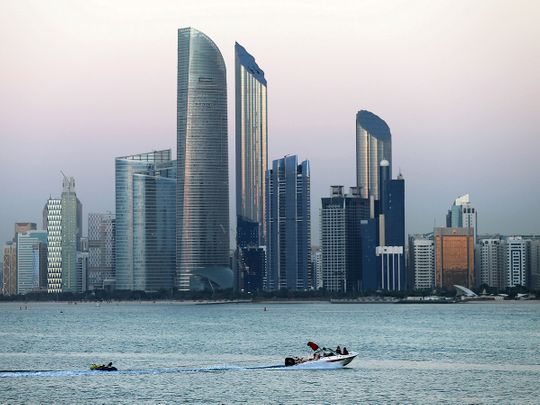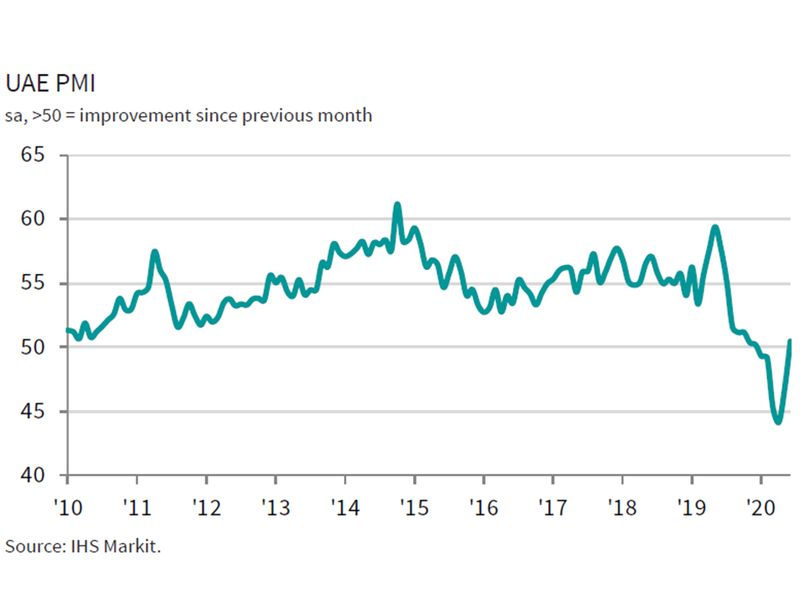
Dubai: The UAE non-oil private sector enjoyed a return to growth in June, latest Purchasing Managers’ Index (PMI) data showed.
June data showed as the country continued to relax measures designed to stop the spread of COVID-19, new business rose at a solid pace, driving the first increase in output since last December.
The headline seasonally adjusted IHS Markit UAE Purchasing PMI rose to 50.4 in June, to signal the first improvement in operating conditions for six months. The upturn was also the strongest since October 2019, but still much weaker than the series average, and slight overall.
“At 50.4 in June, the UAE PMI signalled the first stage of recovery in the non-oil private sector. More firms are now seeing an increase in activity as opposed to a decline, while new orders grew at the fastest rate in ten months,” said David Owen, Economist at IHS Markit.
Beginning of recovery
The headline index was also slightly affected by the suppliers’ delivery times component, which was above 50 for the first time since February and indicated a solid improvement in vendor performance over the month. Relaxed measures on economic activity and movement helped suppliers to partly return to normal services, causing lead times to fall since May.

The output sub-index, which indicated a solid rise in output at non-oil businesses that also marked the first monthly expansion seen in 2020 so far is a clear indication of the recovery under way. New orders grew at a solid rate as well, the fastest since August 2019, as client demand both at home and abroad improved following the relaxing of lockdown measures.
“Businesses also saw an improvement in export conditions, as foreign new orders rose for the first time since January, albeit tentatively. “Despite this positivity, looking at the data over the past few months shows just how large a rebound in output is required to return the UAE economy to pre-COVID levels,” said Owen.
Job cuts
Despite the rise in sales, efforts to limit costs meant firms continued to lower employment during June. The rate of job shedding accelerated from May to one of the quickest seen in the series history. As a result, capacity at many businesses remained low, leading to a ninth successive rise in backlogs that was also the strongest for three months.
Staff costs were reduced in June, albeit at a softer rate than in the previous month. Meanwhile, purchasing costs increased for the second month in a row, in part due to higher demand for inputs as firms started to see an improvement in new business.
“In addition, evidence from panellists suggested that balance sheets remain in a tricky situation, as firms made another solid cut to workforces in order to reduce costs. Thus it may be a long path t o recovery for the labour market,” said Owen
Improving business confidence
Overall cost pressures rose marginally, whereas selling charges fell again in a sequence stretching back to October 2018. Some firms reported offering promotions in order to help client demand rebuild following the pandemic.
Looking forward, the outlook for future activity improved for the first time since March, as more businesses were optimistic that output will expand in the year ahead. This was often related to the relaxation of COVID-19 measures, which many hoped will spur the recovery in demand. This optimism for greater sales drove a slight increase in input stocks for the second month in a row.








